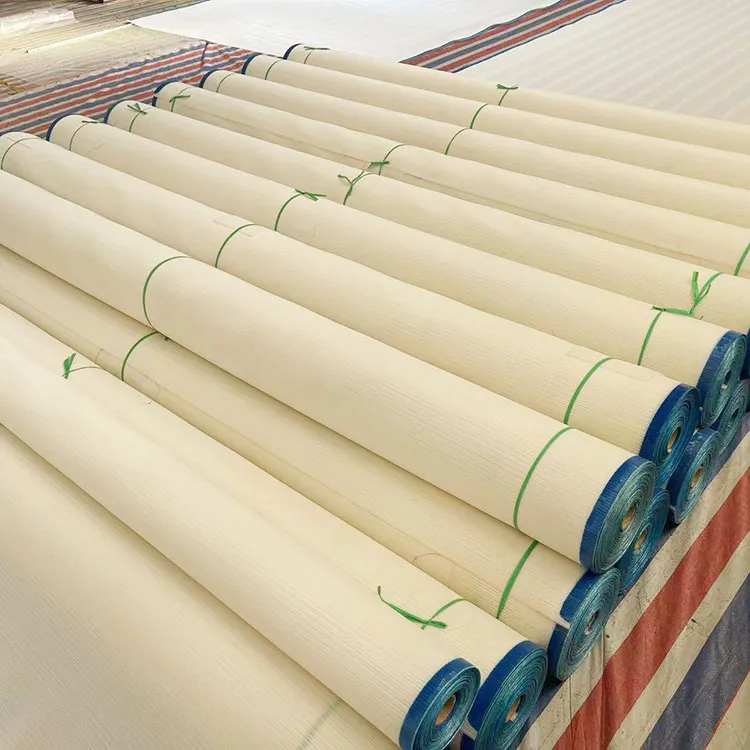Understanding Vacuum Filter Belts: Your Questions Answered
2024-11-05
In various industrial applications, vacuum filter belts play a crucial role in separating solids from liquids. They are essential components in filtration systems used in industries like mining, food processing, and wastewater treatment. This blog aims to answer common questions about vacuum filter belts, helping you better understand their function, types, and maintenance.
What is a Vacuum Filter Belt?
A vacuum filter belt is a continuous belt used in vacuum filtration systems to separate solids from liquids. The belt is typically made of durable materials that allow for the passage of liquids while retaining solid particles. As the belt moves through the filtration system, it uses suction to draw liquids through the belt's surface, leaving the solids behind for further processing or disposal.
How Does a Vacuum Filter Belt Work?
The operation of a vacuum filter belt involves several key steps:
1. Feed: The mixture of solids and liquids is fed onto the moving belt.
2. Filtration: A vacuum is applied underneath the belt, creating a pressure difference that draws the liquid through the belt while retaining the solids on the surface.
3. Washing (Optional): Some systems may include a washing stage, where water or another liquid is sprayed onto the solids to remove any residual liquid.
4. Discharge: The dried solids are discharged from the end of the belt, while the filtered liquid is collected for further treatment or disposal.
What Are the Different Types of Vacuum Filter Belts?
Vacuum filter belts come in various types, including:
1. Woven Belts: Made from fibers like polyester or nylon, these belts provide good filtration and durability.
2. Monofilament Belts: Constructed from a single filament, these belts offer excellent flow rates and are easier to clean.
3. Perforated Belts: Featuring holes that allow liquids to pass through while retaining solids, these belts are often used in specialized applications.
4. Composite Belts: Combining different materials, composite belts can offer unique properties for specific filtration needs.
What Materials Are Vacuum Filter Belts Made From?
The materials used for vacuum filter belts are chosen based on their application requirements. Common materials include:
1. Polyester: Known for its strength and resistance to abrasion, polyester is a popular choice for general applications.
2. Nylon: Offers flexibility and excellent tensile strength, making it suitable for challenging environments.
3. Polypropylene: Lightweight and resistant to chemicals, polypropylene is often used in food processing and wastewater applications.
4. Stainless Steel: Used in high-temperature or highly corrosive environments, stainless steel belts provide durability and long life.
What Applications Use Vacuum Filter Belts?
Vacuum filter belts are widely used across various industries, including:
1. Mining: For dewatering mineral slurries and separating valuable minerals from waste.
2. Food Processing: In applications like juice extraction and sugar processing, where solid-liquid separation is crucial.
3. Wastewater Treatment: To remove solids from sewage and industrial effluents before discharge.
4. Pharmaceuticals: For filtering and purifying chemical solutions in drug manufacturing.
5. Pulp and Paper: To separate pulp fibers from water during the papermaking process.
How Do You Maintain Vacuum Filter Belts?
Regular maintenance is essential to ensure the optimal performance and longevity of vacuum filter belts. Here are some key maintenance practices:
1. Regular Inspections: Check the belt for wear, tears, or damage. Inspect the seams and edges to ensure they are intact.
2. Cleaning: Depending on the material and application, clean the belt regularly to prevent buildup of solids and maintain filtration efficiency. Use appropriate cleaning agents that won’t damage the belt material.
3. Adjust Tension: Ensure the belt is properly tensioned to prevent slippage and excessive wear.
4. Monitor Performance: Keep an eye on filtration efficiency and output quality. Any significant changes may indicate a problem with the belt or the system.
5. Replacement: Be prepared to replace the belt when it shows signs of significant wear or failure. Timely replacement can prevent costly downtime and maintain system efficiency.
What Factors Should Be Considered When Choosing a Vacuum Filter Belt?
When selecting a vacuum filter belt, consider the following factors:
1. Application Requirements: Assess the specific filtration needs of your process, including the type of solids and liquids involved.
2. Material Compatibility: Choose a belt material that is compatible with the substances being filtered to avoid chemical degradation.
3. Belt Dimensions: Ensure the belt dimensions match your filtration system’s specifications, including width and length.
4. Durability and Strength: Look for belts that can withstand the operational conditions, including temperature, pressure, and abrasion.
5. Cost-Effectiveness: Consider both the initial cost and the long-term durability and maintenance costs when selecting a belt.
Conclusion:
Vacuum filter belts are essential components in many industrial filtration processes. Understanding their function, types, materials, and maintenance can help you make informed decisions when integrating them into your operations. By choosing the right vacuum filter belt and maintaining it properly, you can enhance the efficiency and effectiveness of your filtration systems, ultimately leading to better productivity and cost savings. Whether you’re in mining, food processing, or wastewater treatment, the right vacuum filter belt is a key to success.



